Dead or Alive 6 Review
Staying competitive in an increasingly crowded arena
It sometimes feels like the Dead or Alive fighting game franchise is treated like that one child in the class who sits in the corner. It's never really mentioned in the same breath as the likes of Tekken, Street Fighter, BlazeBlue, and so on. Even Mortal Kombat seems to be treated in higher regard, and so I've never quite understood why this game series doesn't get a fair shake. And no, I'm not talking about the jiggle physics.
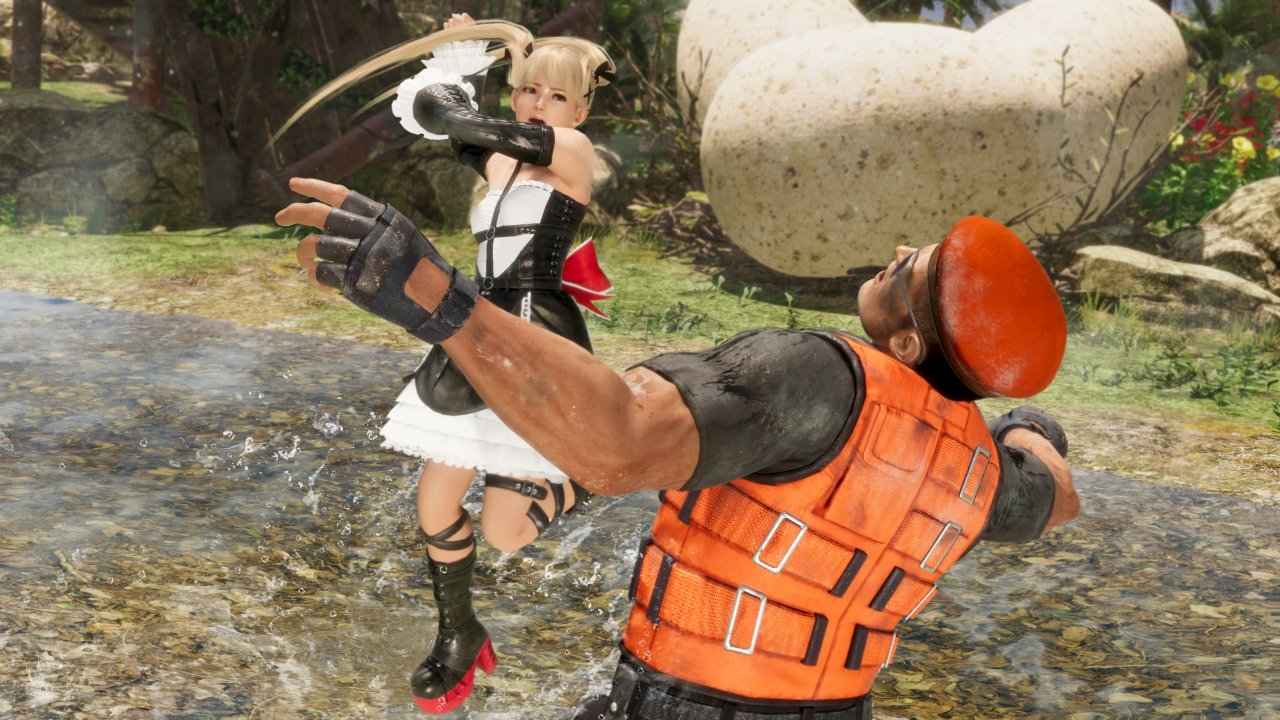
Developed by Team Ninja, the studio responsible for the game's previous installments, Dead or Alive 6 strives to mix the old with the new. One of the first new elements you'll notice is the introduction of 2 new fighters to the ring, bringing the total up to 24. The first, NiCO, is a quick fighter who can imbue several of her attacks with lightning. Her moveset is quite balanced, and the addition of her "stances" (that can open up new moves mid-combo), give her a good number of juggling options. Because a number of moves can be cut short to enter into these stances and unleash powerful moves or staggering attacks, she does well keeping opponents on their toes.
Diego, on the other hand, is a slower brawler with a street fighting style. He reminded me of Steve Fox from Tekken, in that most of his moves are punches. I tend to stay away from these types of characters because my moveset feels limited and predictable. In a game with a counter system, I found him a little too easy to play against. It's a shame because in previous DOA installments you had Gen Fu, whose entire play style revolved around staggering quick attacks - but Diego is just that little bit slower.
DOA6, of course, features fan favourites ready to crack heads. My personal "mains" and series mainstays like Hayabusa, Ayane, Jann Lee, Kasumi, and Brad Wong make a welcome return. As opposed to other fighting games, I've always found DOA to be the game where can I play confidently with a large number of characters because of the accessibility of the movesets. A lot of combos are "transferable", by which I mean in most instances, the same inputs will work across a variety of characters, letting you settle in quickly. However, there's still a welcome complexity once you dig further in.
Before you dust off the arcade controller for DOA6, there are a number of modes waiting for you. Single Player story mode is one of the more bizarre ways I've seen it implemented in recent memory. There's more of a push to separate a beat-em-up's story with a simple Arcade mode. DOA6 handles this with a branching story mode made up of chapters for each character that feeds back, in most instances, into an all encompassing narrative.
Now, DOA's story is pretty convoluted to begin with. In Dead or Alive 6, you pingpong around different character chapters. So, by playing Ayane's third chapter, I may unlock Helena's first chapter, which then unlocks Brad Wong's third chapter. While they do offer you a summary of the chapter's content, it's like having several books open at once, furiously reading a part from each in a seemingly random order. The chapters themselves boil down to simply a fight and are quick to do, though I was never sure which difficulty I was playing on. In the end, it's just a bit of fluff, and I do enjoy the fact the series doesn't take itself too seriously and captures the individuality of each character.
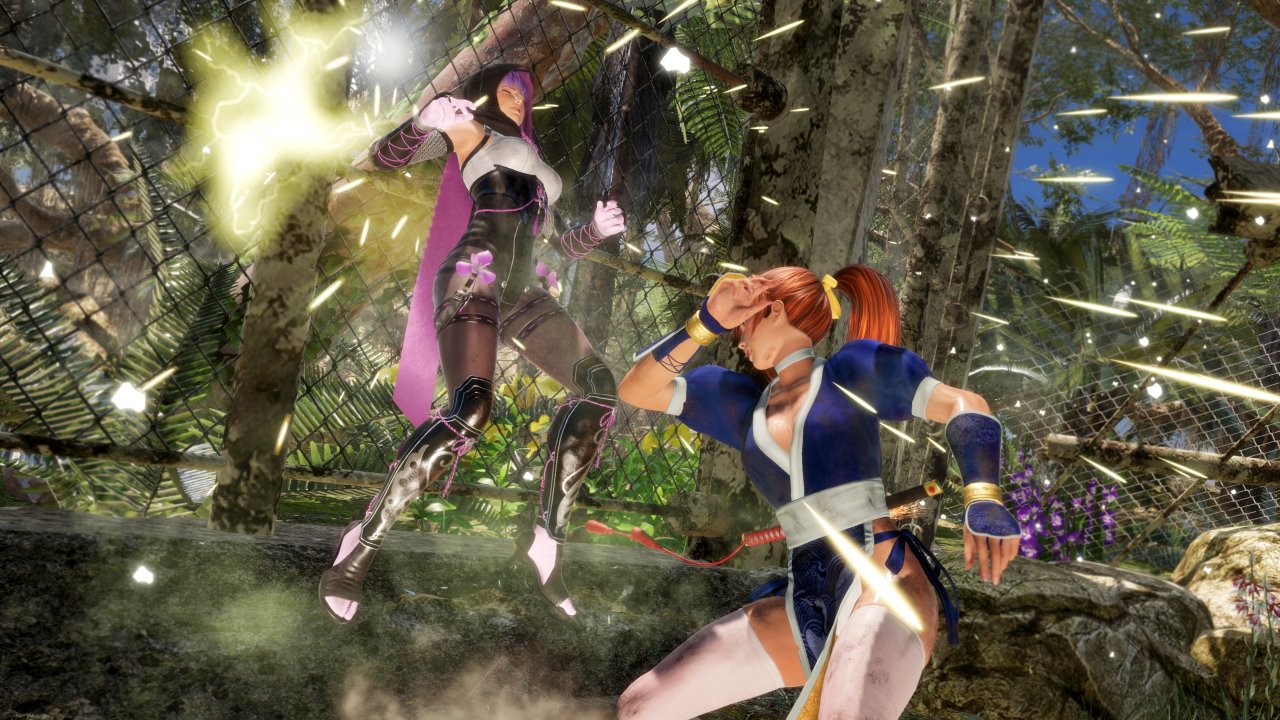
I often switched from the story mode to the much more interesting Quest Mode. The latter offers a series of challenges utilizing different characters, with increasing difficulty. Similar to story mode in that you're bouncing between different characters, it's a great way of slowly acclimating yourself to the roster. Each quest differs in its core challenge, rewards, and number of opponents you fight. One challenge will, say, have Bayman having to perform certain moves from his repertoire, along with executing dodges and clearing the round under a certain time. You gain a token for each completed task (which you can retry); if you get all three, you unlock an extra reward. This can be anything from costume parts to trivia entries. There are absolutely tons of challenges to keep you entertained and it's a great addition I wish more games implemented.
Another aspect Dead or Alive 6 nails is educating both newcomers and veterans. You have an ability to take a very basic tutorial that, among core movesets, explains the new "Fatal" movesets. The tutorial modes include free battle, a guided run through each fighters' moveset, and the combo tutorial mode that gave me welcome Street Fighter EX Plus Alpha flashbacks. If you want to dive more into details, such as seeing which strikes hit where on a character or specific damage caused, you have that option too. However, my biggest gripe with the practice mode is the inability to have an un-walled environment. I found it infinitely frustrating having to hit the "reset character position" button every few move cycles because I kept hitting the wall.
Playing online, DOA6 feels like it is lacking inspiration. While the Day One patch introduced Lobby Match mode, "Throwdown Challenge" (battle invite), and re-match for Ranked matches, there's no sight of any team battle modes or any interesting twists on the existing stock standard modes. I wish the game had something more unique, like MK's winner-stays-on battle mode to make its online component stand out.
Ranked Battles themselves will be your biggest challenge and best way to improve. I had a ton of fun online with the game, though was plagued by a few bad or fluctuating connections. Sometimes the input lag on combat was extremely frustrating and there's nothing you can do but forfeit. But when you find that challenging opponent and get a good back and forth going in rematches, it's a real thrill. Plus, you level up much quicker in this mode as you climb ranks, so there's a lot of incentive to get stuck in and have fun.
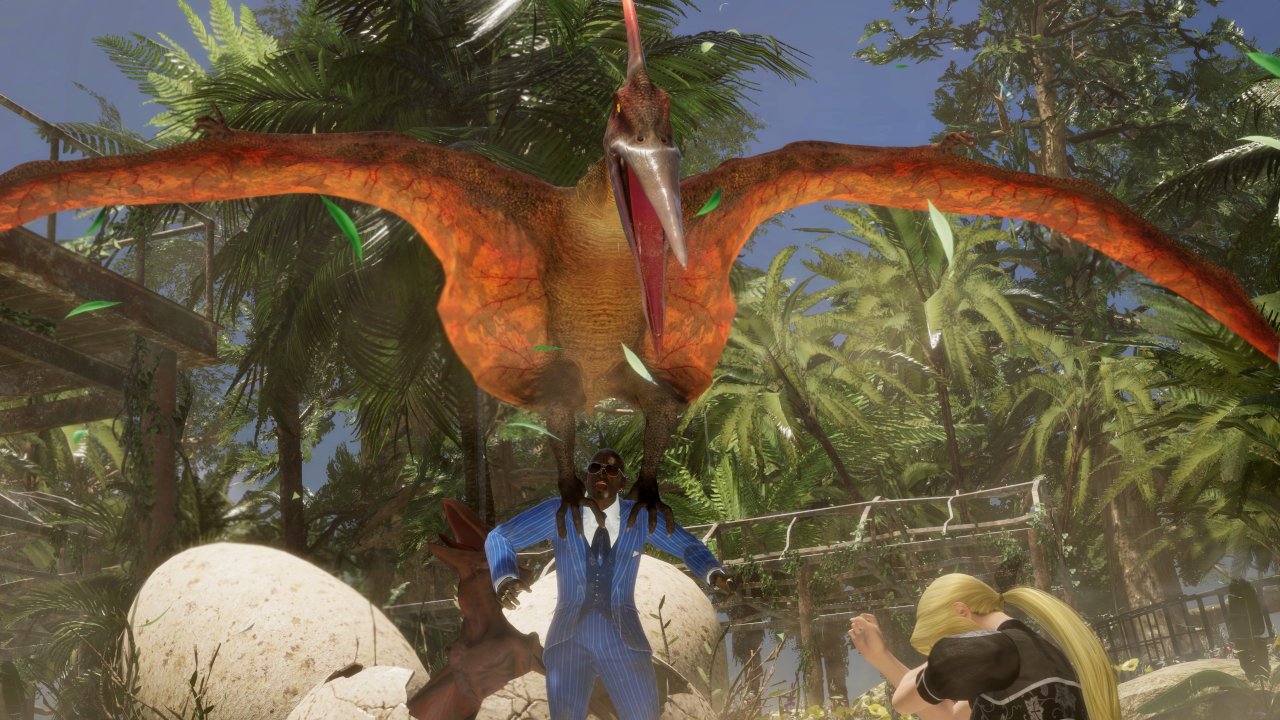
Any fighting game worth its salt has to deliver in its battle mechanics. There is no great deviation in terms of DOA6's controls: you have punch, kick, guard/hold, throw, in addition to double-button attacks and the new Fatal attacks. When you get down to it, you've probably seen the Fatal attack mechanic before. It's a super attack that's meant to even the odds and is executable once you have filled up a special gauge. It can be chained into a regular tap of the fatal strike button, meaning you can execute a four combo attack before it that racks up quite a fair chunk of damage. Another feature of the new fatal strike system is its hold ability as a "gimme" (as long as you have enough of the gauge available). It allows you to dodge pretty much any attack (rather than figure out which direction your hold needs to be) .
Mechanically speaking, the Fatal attack plays out much like in Tekken - you can tell when it's coming. Someone's low on health, they want to even the odds, so you're constantly keeping your distance or feigning an opening so you can block it. However, the move is easily comboable into regular attacks, meaning you can unleash some rather satisfying (and punishing) combos.
Unlike Tekken, however, there was no toning down of the juggling mechanics. The way stages are laid out, with interactable aspects like explosions that punt characters into the air, crowd members that shove your opponent back into the fray, and even mighty Krakens that will manhandle your foe before sending them crashing through the floor, each stage has its own peculiarities that become as much a part of your repertoire as the moves themselves.
Juggling options are plentiful and a core part of the game. It's key that, for higher level play, you mix up moves as much as possible to avoid the counter hold system. While you can set it to only 3 holds (you filthy casual), the four-way system means that you must input different combinations for high, mid, and low attacks (with mid-kicks requiring a different input). It's a simple addition that really changes up the combat in a positive way, and is just as essential as blocking. It can be hilarious when you and are opponent are constantly hitting the hold button, spasming in front of each other, waiting for someone to attack.
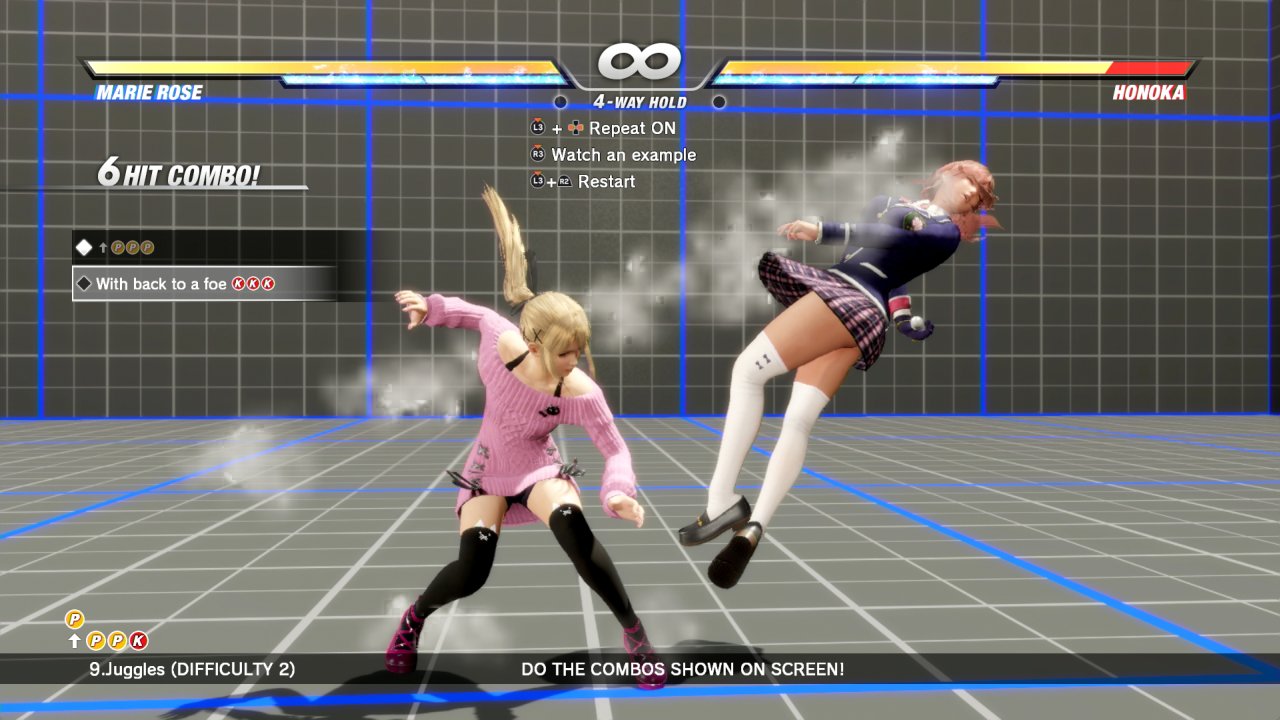
Dead or Alive 6 also follows in the footsteps of modern fighting games by more heavily implementing customization options. By competing in various modes, you will earn coins that you can use to unlock outfits (only after you have collected enough costume parts), hairstyles, glasses (of all things), and trivia items. It's fairly easy to stock up on currency and costume parts if you're playing online, but it's slightly more drip fed and a grind in other modes. For example, you'd never try to earn costume parts in arcade because you'd get a paltry reward, so online or the Quest modes is more sensible.
Unfortunately, I think it's perhaps the worst approach to customization I've seen recently. I know people love dressing up the women in this game, but characters like Hayabusa used to have some awesome alternate costumes you unlocked through playing. Now you only have a couple that come in a paltry number of boring colours. The real meat of the costumes are hidden away in the Season Pass (at a rather large additional cost). I know it doesn't really affect gameplay, but I do have an issue with games taking away what was originally part of the core experience, especially when you've already forked out full price.
Because these customization options are so few and rather bland, it pales in comparison to the likes of Tekken and Soulcalibur, which really let you express yourself through ridiculous costumes. Funnily enough, the most amusing form of expression comes from the name plates that you can unlock through playing and leveling up your player account and separate character account. You then use the game's currency to purchase the plates which show when you're battling online. "AGGRESSIVE CABBAGE" and "SCRUB SHOWDOWN" were just some of the ones that gave me a chuckle.
Graphically, DOA6 shines more in its level design than its characters. You're assaulted by colour from the menu and into battle, and the stages are where the game shines. From pirate ships, to wrestling rings, to outdoor street fights, what makes these locales great is that they all offer something unique. You can bully opponents into areas of the stage where they're vulnerable, like locating explosive barrels and cars that jettison your foe into the air. Characters themselves do appear like they have some extra polish to them, but Team Ninja isn't shooting for a hyper-realistic look. It's more like these are action figures come to life, with fighters possessing a slightly plastic-like sheen to them.
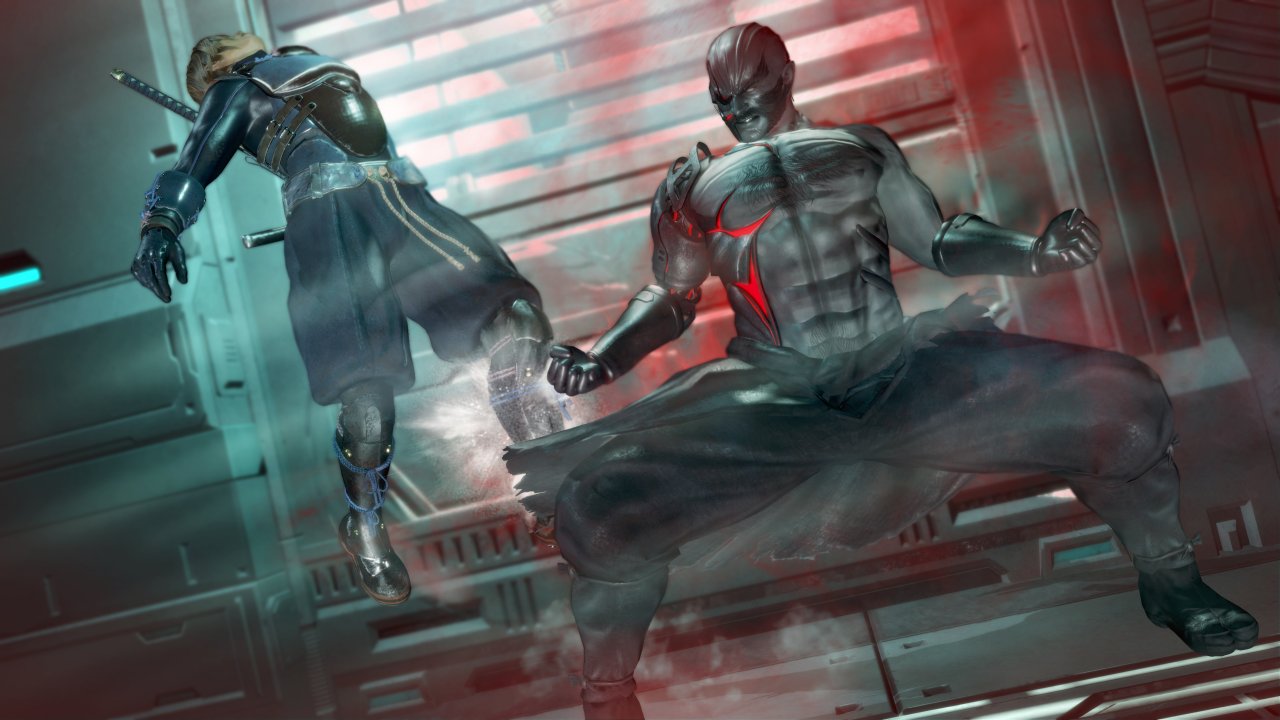
Dead or Alive 6 is another solid entry into the series and I'm pleased that it didn't opt to tone down its hectic, breakneck combat. If anything, the action's been cranked up to 11 and despite an accessible veneer, there is complexity in its fighting system. DOA6's hold system offers a surprisingly nuanced way to approach combat and does enough to differentiate itself from the crowded fighting game market. As a long-time fan of the series, this latest entry delivered on that dose of crazy fisticuffs that I've come expect from the franchise.
 Comments
Comments




















